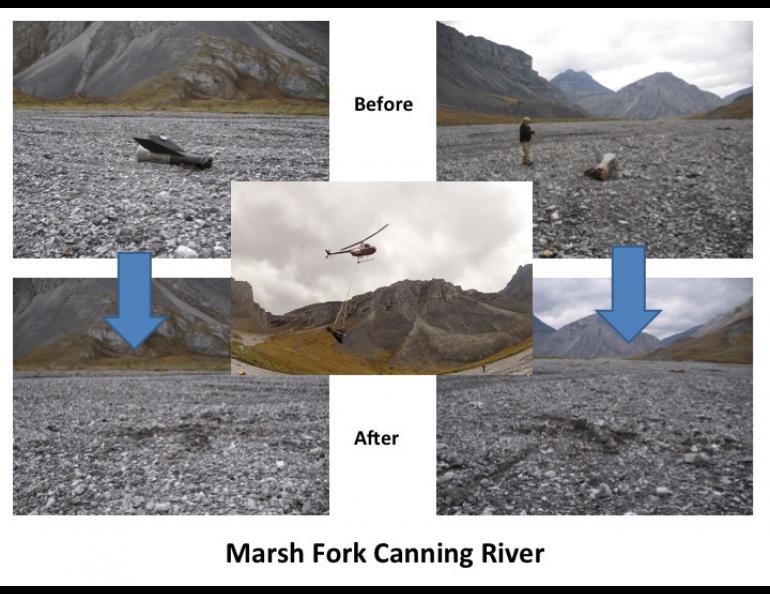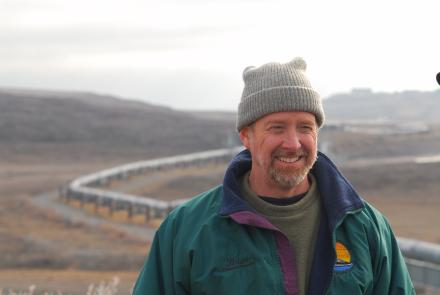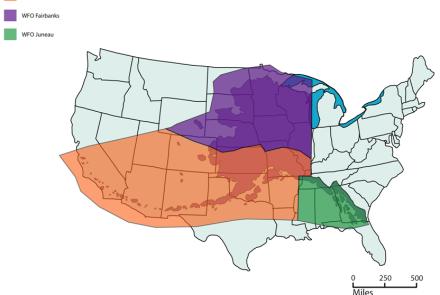

Rocket parts picked up in northern Alaska
Following up on a NASA promise to recover spent rocket parts scattered for decades across northern Alaska, workers for Poker Flat Research Range recovered more than 7,000 pounds of debris from 17 different sites in 2012.
Peter Elstner, who also works for the University of Alaska unmanned aircraft team, led a team that picked up rocket parts from the White Mountains National Recreation Area north of Fairbanks to the Marsh Fork of the Canning River last summer. The pieces ranged from aluminum payload containers as heavy as a National Football League lineman to tiny flecks of rockets that exploded on impact.
“In some places, I was picking up stuff the size of my thumbnail out of the ground,” Elstner said.
The pieces were from sounding rockets launched mostly on winter nights since 1968 at Poker Flat Research Range, a university-owned complex in Chatanika, about 30 miles north of Fairbanks. Scientists arc rockets through the zone from about 50 to 800 miles elevation to gather information on the aurora and other aspects of space weather. NASA launches about four rockets each winter from Poker Flat. Some stages fly hundreds of miles northward before returning to the ground.
In 2011, due in part to comments from backcountry hikers who complained about seeing spent rocket parts in remote areas, Poker Flat and NASA began a “clean range policy.” Their goal is to recover every piece and part of the multi-stage rockets, some of them 50-feet tall, launched from Poker Flat. NASA announced it would pay people $1,200 for the locations of spent rocket motors that had not been reported before and a $500 reward for the whereabouts of smaller parts, such as nose cones, doors and payloads.
Several people, including hikers, hunters and pilots, contacted Kathe Rich, range manager at Poker Flat, when they heard of the reward program. She paid several thousands of dollars of rewards for pieces that were not in her database. Some, such as a person-size motor with tailfins still attached on a gravel bar of the Marsh Fork of the Canning River, were easy to see. Five people reported that same part, but only the first received the reward.
Elstner and Tony Tyree of Poker Flat picked up the Marsh Fork part and many others in summer 2012. Elstner and Tyree first confirmed that reported rocket parts were indeed there as they flew in a Wright Air Service Helio-Courier. Heather Bartlett, a pilot-biologist for the Arctic National Wildlife Refuge, also helped confirm a few part locations.
Once they located parts, the Poker Flat workers used a small hired helicopter to transport debris to a gravel bar, where a fixed wing pilot, sometimes Kirk Sweetsir of Yukon Air Service out of Fort Yukon, flew the debris to a village airstrip. From there, Wright Air Service pilots flew the rocket parts back to Fairbanks.
Sweetsir himself spotted a rocket part while transporting hunters; the recovery team also found unreported parts.
“We found four pieces ourselves flying around,” Elstner said. “One was a five-inch (diameter) Tomahawk from 1973. It looked like a downed birch tree in a burned-out spruce forest.”
The recovery team missed out on one reported rocket off the Junjik River north of Arctic Village due to the increasing darkness of autumn. The team will recover that in 2013, Elstner said, as well as some rocket debris that was staged in Arctic Village for a flight to Poker Flat. Someone in the village moved several hundred pounds of rocket parts from near the Arctic Refuge Visitor Center to the Arctic Village landfill. Team members plan to remove the parts from the landfill when the snow melts this spring.
Officials of NASA’s Sounding Rockets Program Office in Wallops Island, Virginia, are now finalizing an Environmental Impact Statement that decides the future of rocket launches out of Poker Flat. The draft statement was open for public comment until late November 2012. Project team members at NASA are now considering received comments as they write the final version. The writers of the plan presented options ranging from no rocket recovery at all to a recovery-at-all-cost program. NASA has committed to funding the recovery program Elstner leads until all rocket parts are recovered.
The Alaska Science Forum has been provided as a public service by the Geophysical Institute, University of Alaska Fairbanks, in cooperation with the UAF research community since the late 1970s. Ned Rozell is a science writer at the institute.







